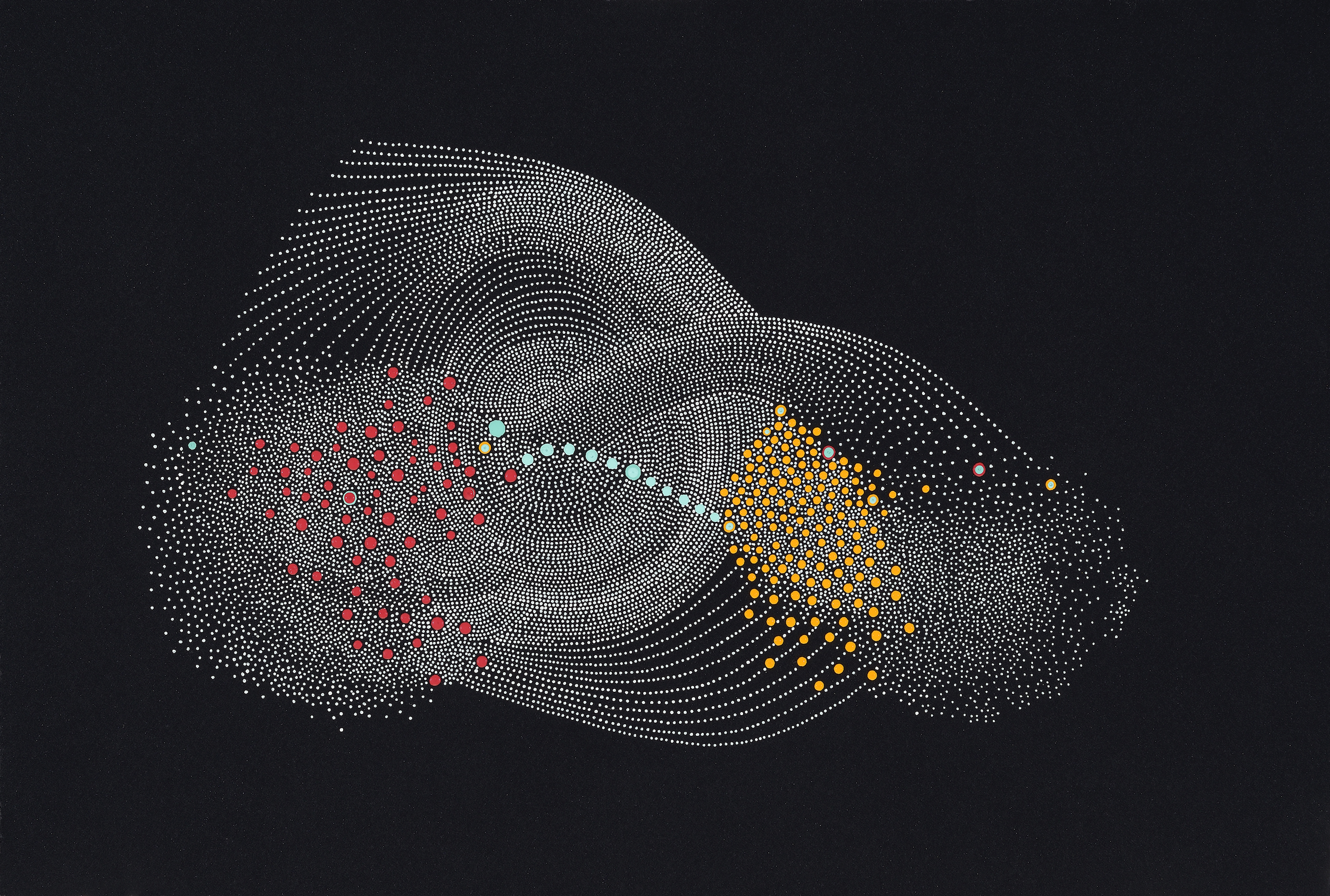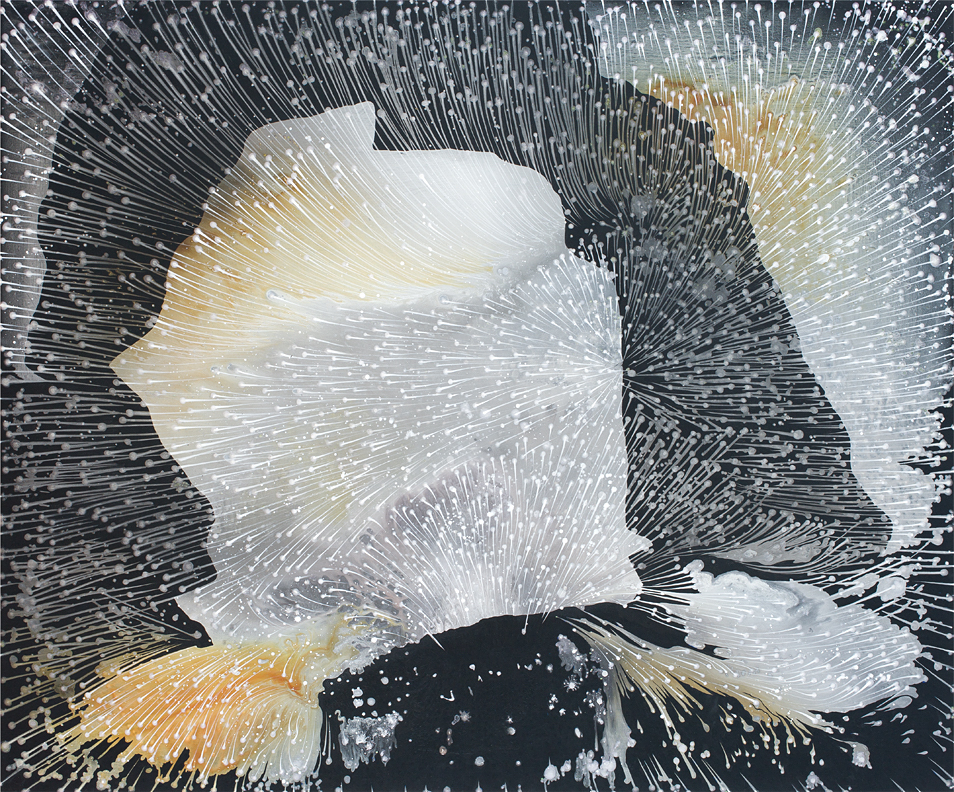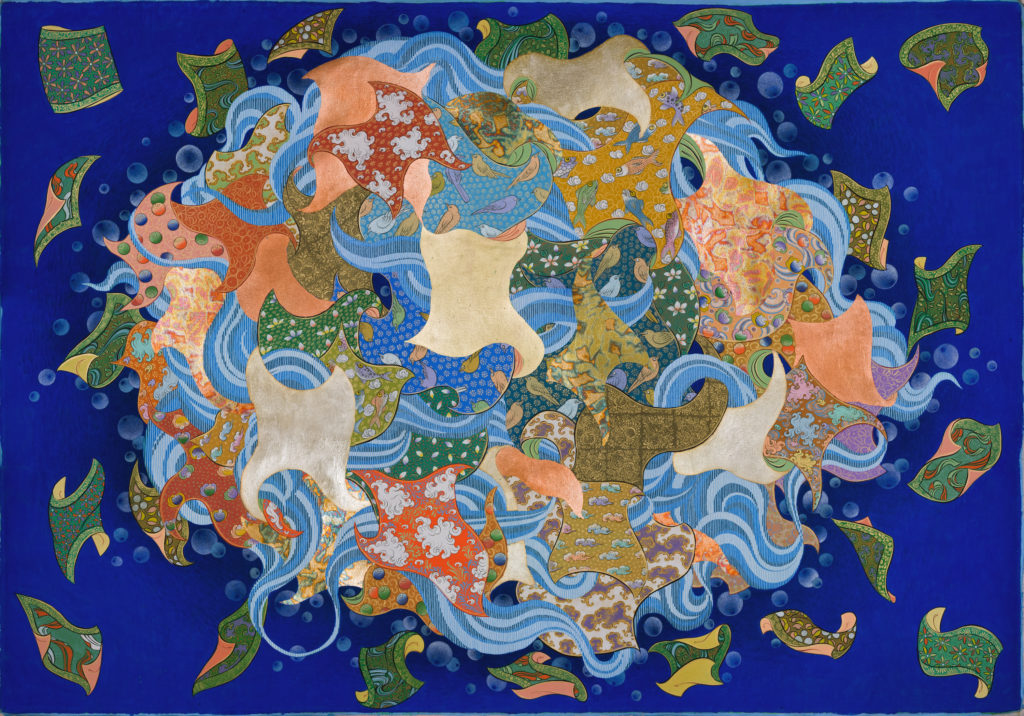Art was the last thing on my mind as I sauntered through the village green of Woodstock, New York—particularly given that my trip upstate followed upon a visit to the 2019 Whitney Biennial. The received truths proffered on Gansevoort Street left me in no mood for gallery-going. A stopover at the Kleinert/James Center for the Arts of the Woodstock Byrdcliffe Guild wasn’t high on the agenda. Curiosity prevailed, however, and with a happy upshot. The Guild, founded in 1902 by Ralph Radcliffe Whitehead, a wealthy industrialist who studied with John Ruskin, was instituted along utopian lines as a “brotherhood of artists.” As is typical of utopias, this one was riven by internal contradictions; brotherhood proved contentious, illusory, and ill-fated. The Guild adapted and has, over the long haul, proven itself a boon to artists of all stripes. Thomas Mann, Milton Avery, John Dewey, Philip Guston, Eva Hesse, and Wallace Stevens, among others, benefited from the corresponding Arts Colony located a short jaunt from Woodstock proper. The intown face of the Guild, the Kleinert/James Center for the Arts, is located on Tinker Street, a picturesque main drag. Whether it gets as much foot traffic as the local eateries and hippie-themed tchotchke shops is a good question. Art is a tougher sell than peace, love, and a ceaseless backdrop of 1960s rock music.

“Labyrinths of the Mind” would seem to be more of the same, the title being redolent of the mind-expanding promises of vintage psychedelia. The truth is less woozy. Sara Lynn Henry, a Professor Emerita of Art History and the National Endowment for the Humanities Distinguished Professor of Humanities at Drew University, has gathered together sixteen artists whose work presumably answers a blunt curatorial gambit: “Where have our minds gone these days?” The exhibition touchstones are depth psychology—psychoanalysis, basically—and neuroscience. Both disciplines “agree that our mind/brain structures meaning out of disparate bits of information stored in various locations.” Henry is more enthusiastic about her thesis than clear in outlining its tenets, but makes a point of distinguishing how the “art/mind stream of consciousness” embodied by contemporary artists differs from that of the Surrealists and Abstract Expressionists. Postmodernism had a decisive influence on the former, as has “the cascade of media, digital messages, and commercial/political (false?) realities that inundate us of late.” Given all this, how can a labyrinth not become more labyrinthian?
“Labyrinths of the Mind” covers some of the same territory as “The Forever Now,” the universally vilified exhibition mounted by the Museum of Modern Art in 2015. The Woodstock show is more modest in scope and less declamatory in mien, and better for it. The artists whom Henry has chosen are a motley bunch—gratifyingly so, I might add. Market-based credibility needn’t be a deterrent to good art, but the artists featured in “Labyrinths in the Mind” are of variable renown and, more important, in it for the long haul. Vision, not fashion, determines the work. How purposefully do they plumb “the far reaches of [the] metaphoric mind”? Credentials tell. Greg Dunn has a Ph.D. in neuroscience, Nene Humphrey is artist-in residence at NYU’s LeDoux Neuroscience Lab, and Ellen K. Levy has dual Ph.D.’s in neuroscience and art. And, yeah, the curator’s premise does allow for ample wiggle room. Still, the Woodstock show creates odd and diverting contrasts between various pieces, and does so without unduly strong-arming them. Idiosyncrasy is the rule, and Henry has allowed for independence. The curator has done her job well.

DC Moore Gallery, New York, NY.
It helps that the artists are, for the most part, in thrall to their particular media. Craft is an ineluctable component of the work, whether it be loose-limbed and calligraphic (Ford Crull), beyond meticulous (Dunn, Sam Messenger, Paula Overbay), quasi-programmatic (Sarah Walker, Dannielle Tegeder), or ineffable (Humphrey, Zachary Keeting). Pictorial structures tend toward the densely woven and non-hieratic with the exception of Jane Fine, whose Rise Up (2018) offsets loaded symbols to uncertain effect, with a queasy, keening light. Owen Gray, a fine painter of deftly orchestrated phantasmagorias, is the odd man out: his art owes more to nature’s fecundity than the cold hard truths of the laboratory. There’s no gainsaying the inclusion of Barbara Takenaga: ARCH (2018) finds the veteran painter expanding upon a signature technique by waylaying the schematic with heartening results. The find, however, is Pema Rinzin, a Brooklyn painter by way of Tibet. Working with ground mineral pigments, gold and copper leaf, and acrylics, Rinzin creates vividly colored and immaculately limned compositions—mandalas, kind of; crystalline, absolutely; ornate, oh my yes. Their complexities function as the epicenter of an exhibition whose attractions are somewhat sneaky and worth extolling. It’s a labyrinth worth getting lost in.

